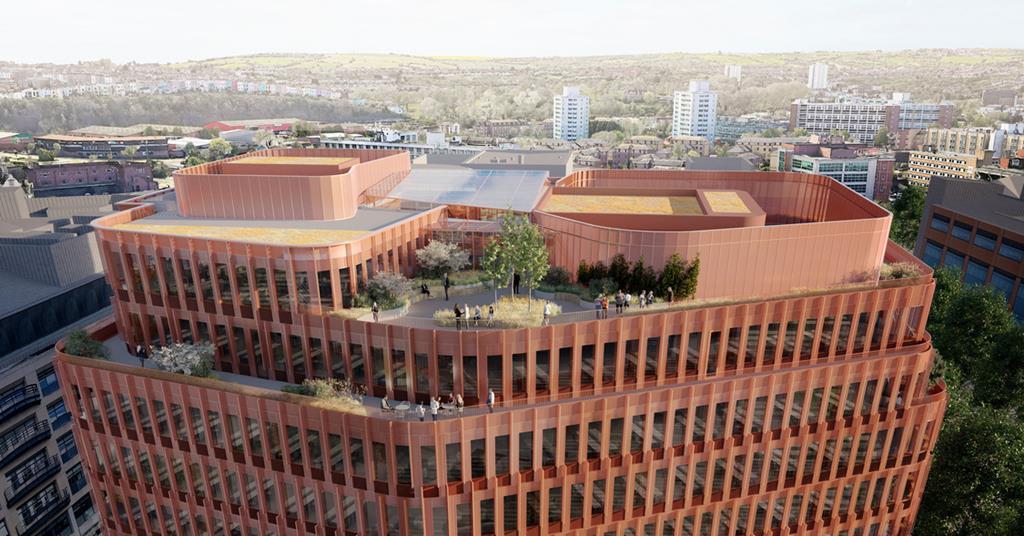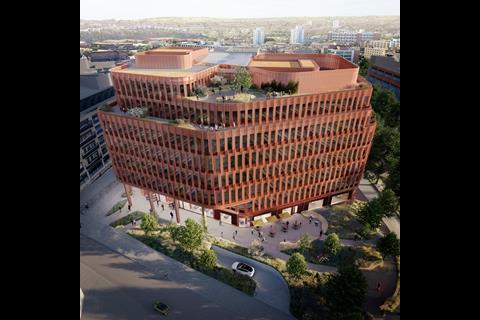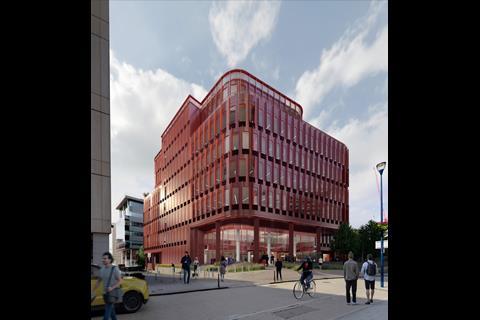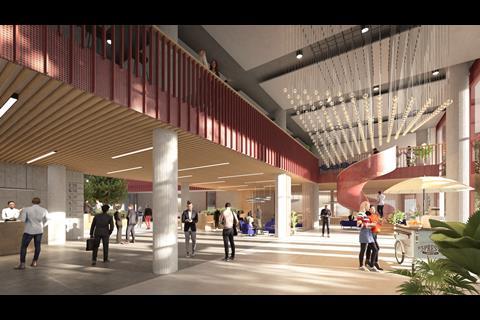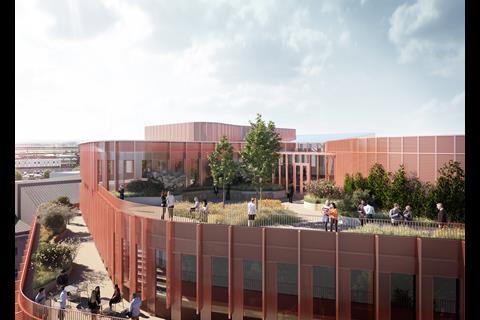Sheppard Robson has been given the green light to renovate and expand an early 2000s office building in central Bristol.
Designed for a joint venture between Ardstone Capital and CBRE Investment Management, the project will retain almost 90% of the existing building while adding three floors to the roof.
The existing structure was completed in 2002 and is prominently located on Temple Way, close to Bristol Temple Meads railway station.
Sheppard Robson's plans call for the façade to be stripped back and replaced with a cladding of vertical slats in a dark red color, intended to serve as a nod to Bristol's Byzantine architectural style, popular in the city in the late 19th century.
Additionally, the space between two building wings will be filled to create larger and more flexible floor plates aligned around a new central core.
Extensions to the north form a two-story colonnade on the ground floor that frames a new double-height reception facing the Temple Quarter.
The three new floors at roof level replace the building's current upper floor plate and plant enclosure, stepping back as the building rises to create a series of planted terraces that wrap around the top of the building.
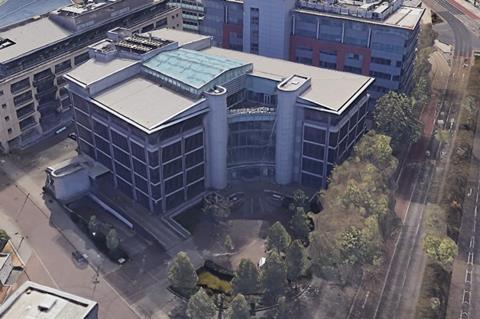
Mark Kowal, partner at Sheppard Robson, said the project was an example of the preservation of late 20th-century buildings that until recently “would have been under the pressure of demolition”.
“Our design transforms this aging building into a workplace designed to meet the needs of modern tenants and their sustainability aspirations,” he said.
“The transformative nature of the project is consistent with ingenuity. We retained as much as possible while using bold architectural ideas to signal the arrival of major new development and public spaces for Bristol.”
The energy is supplied via a district heating network, with photovoltaics accounting for around 30-40% of the building's electricity consumption, depending on operation and use.
